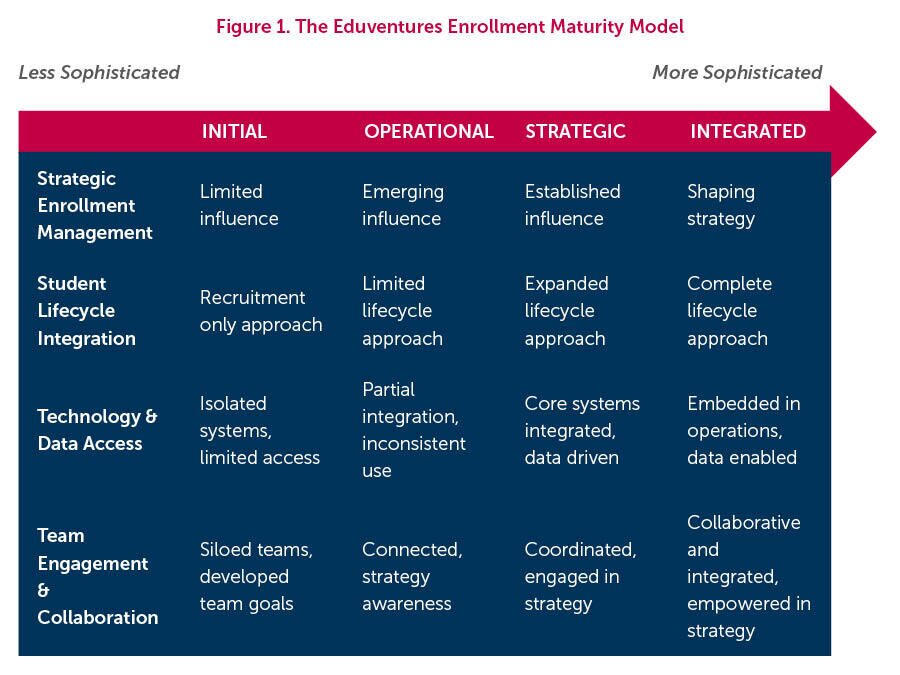The Latest Eduventures Research Report Introduces a Model for Higher Education Institutions to Assess Their Current Enrollment Management Maturity
BOSTON, MA – September 18, 2025
Encoura®, an industry-leading educational technology and research organization, announced today the recent publication of the Eduventures report, Enrollment Management Maturity Model 2.0: A Framework for the Future. The report – first published in 2016 – uniquely draws from interviews with enrollment leaders nationwide and introduces a matrix to assess the strength of an institution’s enrollment teams, technology, and strategies.
Today, with Gen Alpha entering the college search, changing federal policies, and AI reshaping operations, enrollment leaders face unprecedented complexity. How can enrollment management teams prepare for these contextual complexities ahead? And how can these teams demonstrate to their institutions’ leadership the value of championing an integrated approach to enrollment management to strengthen their institutions’ future health?
Enrollment leaders interested in growing their organizations can use this report’s Enrollment Management Maturity Model to identify where they currently fall within the phases of maturity and consider the report’s recommended strategies to advance in sophistication.
The report’s model indicates four benchmarks of enrollment management maturity that institutions should strive to achieve: strategic enrollment management, student lifecycle integration, technology and data access, and team engagement and collaboration. To achieve maturity in these areas, teams must overcome six challenges:
- Integrating enrollment across the student lifecycle. It’s no longer enough to graduate students; colleges need to deliver on the student experience through outcomes evidence.
- Adapting to the evolving student market. Mature enrollment leaders are responsive — equipped with tools like market data and student feedback to keep ahead of changing demands and student perspectives.
- Balancing sustainability and access. A one-size-fits-all enrollment approach will not suffice for students who expect personalized pathways.
- Harnessing data and technology for impact. Mature and integrated enrollment teams are fluent in data, supported by a curated tech stack that enables and empowers their work.
- Managing holistic enrollment. A holistic and mature approach establishes a culture across campus of shared enrollment accountability that is supported by executive leaders.
- Leading through complexity. Mature enrollment organizations must lead by balancing strategy, analysis, communication, and relationships with ease while also investing in professional networks.
“In the last decade, colleges and universities have had to navigate considerable changes in student demographics, public perceptions, policies, financial aid, and technological advancements,” said Emily Ross, Eduventures Senior Analyst and author of this study. “A large amount of the responsibility to adapt to these changes to ensure an institution’s and its students’ success falls to enrollment offices. To function at the highest levels of enrollment management maturity, enrollment leaders must be empowered to forge strong vertical and horizontal working relationships – creating and implementing strategies with executive leadership as well as across campus departments.”
In an era of increasing complexity for higher education, institutions must adopt more cohesive practices. The Enrollment Management Maturity Model presented in the latest research from Eduventures equips leaders with a roadmap to understand their current stage, uncover growth opportunities, and drive their institutions toward long-term enrollment success.
